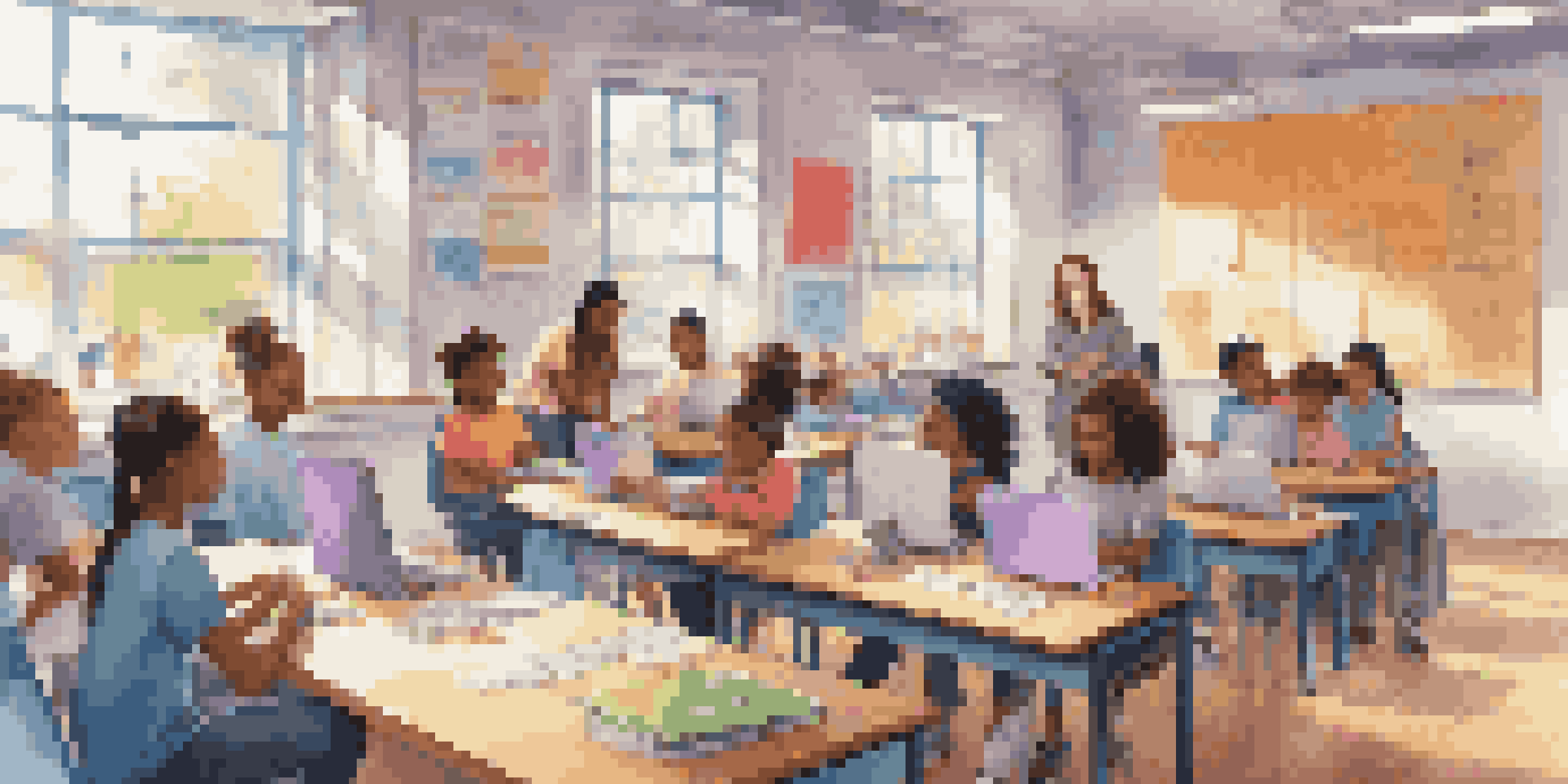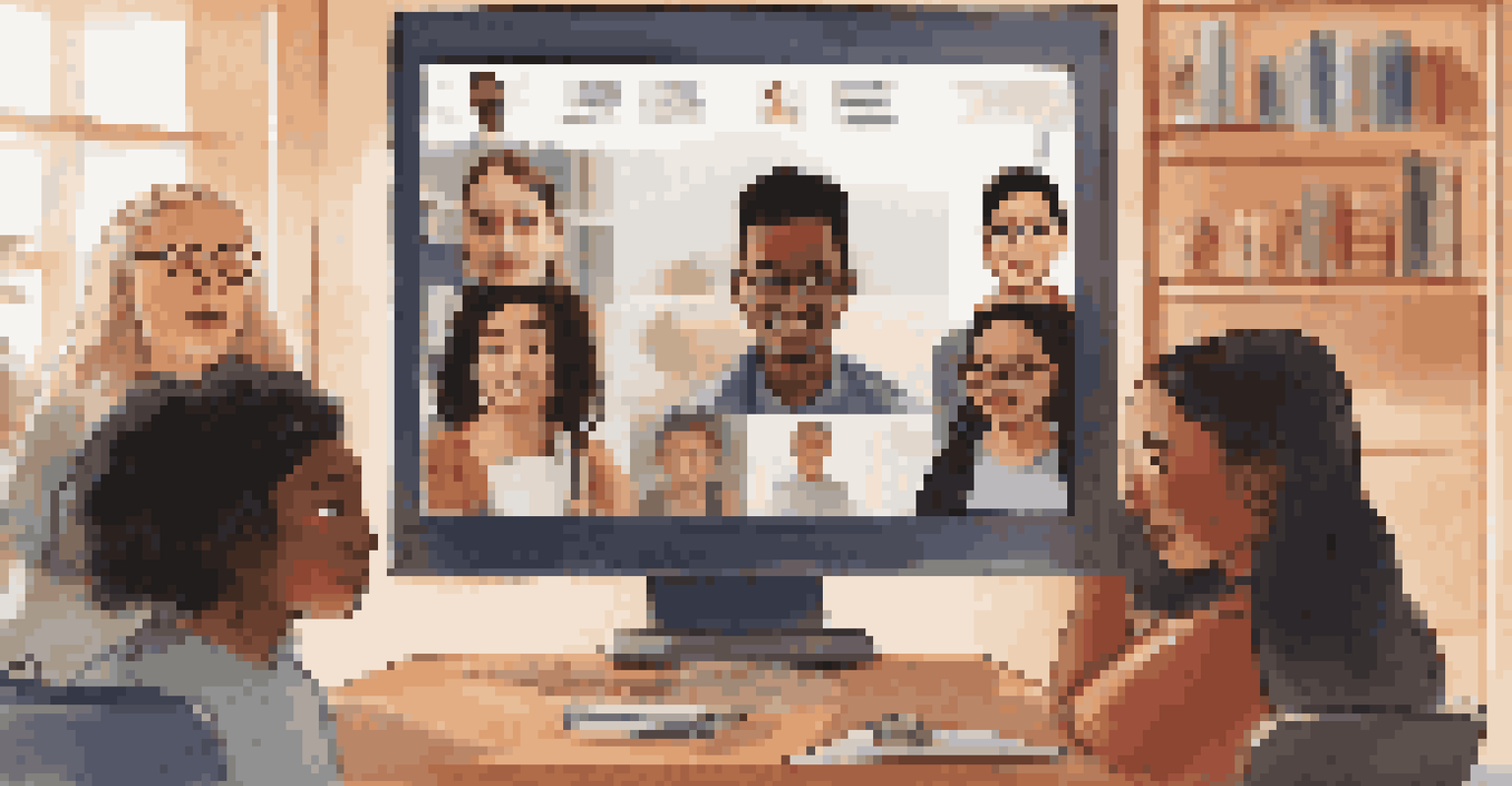How Social Media Platforms Aid in Real-Time Classroom Interaction

The Role of Social Media in Modern Education
Social media has transformed the way educators and students communicate. Platforms like Twitter, Facebook, and Instagram provide a space for instant interactions that were once limited to face-to-face settings. This shift allows for a more dynamic exchange of ideas and resources, fostering a vibrant learning environment.
Social media is not just an add-on; it has become a central part of how we communicate and connect with others.
For instance, teachers can share lesson materials or important updates on their social media pages, ensuring that students stay informed. This not only promotes engagement but also encourages students to take an active role in their learning journey. The ability to ask questions and receive timely responses enhances the overall educational experience.
Moreover, social media breaks down geographical barriers. Students from different parts of the world can connect and collaborate on projects, broadening their perspectives and enriching classroom discussions. This global interaction is invaluable in preparing students for a diverse world.
Encouraging Student Participation and Collaboration
One significant advantage of social media is its ability to encourage student participation. Platforms like Slack and Discord create a space where students feel comfortable sharing their thoughts and ideas. This is especially beneficial for those who might be shy or hesitant to speak up in a traditional classroom setting.

Through these platforms, students can engage in discussions, work on group projects, or even host virtual study sessions. The collaborative nature of social media fosters teamwork, allowing students to learn from each other’s insights and experiences. This peer-to-peer interaction can be more relatable and impactful than traditional teaching methods.
Social Media Enhances Learning
Platforms like Twitter and Facebook facilitate dynamic communication and resource sharing, enriching the educational experience.
Additionally, social media encourages students to take ownership of their learning. By participating in discussions and contributing to group work, they develop critical thinking skills and learn to articulate their viewpoints. This empowerment in the classroom translates to increased confidence and a deeper understanding of the subject matter.
Real-Time Feedback and Assessment Opportunities
Social media platforms provide immediate feedback, which is essential for effective learning. Educators can create polls or surveys on platforms like Twitter or Instagram Stories to gauge student understanding in real-time. This instant feedback allows teachers to adjust their lessons or revisit concepts that students may struggle with.
The greatest danger in times of turbulence is not the turbulence; it is to act with yesterday's logic.
Furthermore, students can share their work through social media, receiving constructive criticism from both peers and instructors. This open line of communication fosters a culture of continuous improvement and encourages students to refine their skills. The quick exchange of ideas enhances the learning process and keeps students engaged.
This approach not only benefits students but also provides teachers with valuable insights into the effectiveness of their teaching methods. By monitoring interactions and assessing student responses, educators can make informed decisions to enhance their curriculum.
Creating a Sense of Community in the Classroom
Social media helps create a sense of community among students and educators. By sharing experiences, achievements, and even challenges on platforms like Facebook Groups, participants can foster a supportive environment. This sense of belonging is crucial for promoting student well-being and enhancing engagement.
When students feel connected to their peers and teachers, they are more likely to participate actively in classroom activities. This connection can lead to increased motivation and a positive attitude toward learning. Social media serves as a bridge that strengthens these relationships, even outside of school hours.
Encourages Student Collaboration
Social media fosters teamwork and participation, allowing students to engage comfortably and learn from each other.
Moreover, community-building activities, such as virtual meet-ups or collaborative projects, can help break the ice among students. These interactions make the classroom feel more inclusive and promote a culture of respect and understanding, which is essential for effective learning.
Facilitating Access to Resources and Information
Social media is a treasure trove of resources and information that can enhance learning. Platforms like Pinterest and YouTube offer a wealth of educational content, from instructional videos to creative lesson ideas. Teachers can easily share these resources with their students, enriching the learning experience.
Additionally, social media facilitates networking opportunities with industry professionals and experts. Students can follow thought leaders in their fields of interest, gaining insights and inspiration that extend beyond the classroom. This access to real-world knowledge is invaluable in preparing students for future careers.
Furthermore, hashtags and groups dedicated to specific subjects allow students to discover content tailored to their interests. This ability to curate their learning materials empowers students, enabling them to take charge of their education and explore topics that resonate with them.
Enhancing Communication Between Teachers and Parents
Social media also plays a crucial role in enhancing communication between teachers and parents. Platforms like WhatsApp and Facebook allow educators to share updates, announcements, and resources with parents in real-time. This transparency fosters a partnership that can significantly impact a student’s educational journey.
When parents are informed about classroom activities and expectations, they can better support their children’s learning at home. This open line of communication encourages parents to engage with their child’s education, leading to improved academic performance and overall well-being.
Builds Community and Support
By creating a sense of belonging, social media strengthens relationships among students and educators, promoting motivation and engagement.
Moreover, social media can facilitate parent-teacher interactions, allowing for quick responses to concerns or questions. This proactive approach helps build trust and strengthens the relationship between educators and families, ultimately benefiting the students.
Addressing Challenges of Social Media in Education
While social media offers numerous benefits for real-time classroom interaction, it’s essential to address potential challenges. Issues such as distractions, misinformation, and cyberbullying can detract from the educational experience. Educators must establish clear guidelines and expectations for social media use in the classroom.
To combat distractions, teachers can incorporate social media into lessons in a structured manner. For example, using social media for specific assignments or discussions can keep students focused and engaged. Providing training on responsible social media use can also help students navigate the digital landscape safely.

Ultimately, fostering a positive and productive online environment requires collaboration between educators, students, and parents. By working together, they can maximize the benefits of social media while minimizing its risks, ensuring a safe and engaging learning experience.